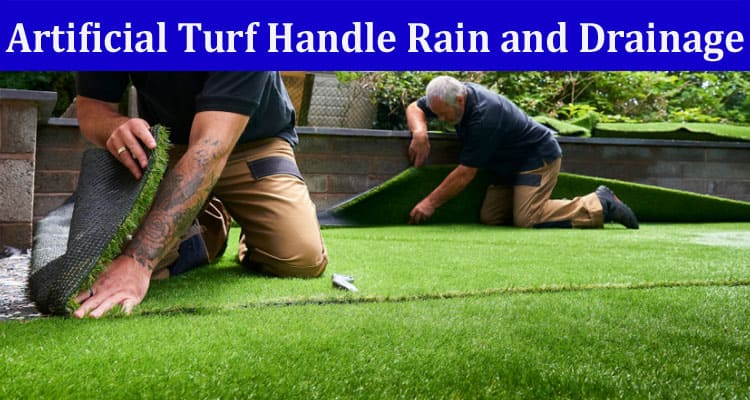When considering artificial turf supply, one concern is how well it will drain rainwater. You don’t want a surface that forms standing water pools, as that could detract from the turf’s appearance and make the space unusable. Choosing the right turf, preparing the surface suitably, incorporating the proper sub-base, and other measures can help the turf drain properly. Here are a few things to know about synthetic turf and drainage:
Reasons Why Proper Drainage Matters for Artificial Grass
Good drainage matters for any artificial turf installation, regardless of location and purpose. Poor drainage can lead to the growth of mold and mildew on the surface, which could cause health problems. Standing water can damage the turf or cause it to sink, creating an uneven surface. This could make it challenging to use for sports activities and other purposes. Improper drainage can also affect the turf’s aesthetic appeal over time, as it may not look as lush and vibrant. The water pools can be unsightly, detracting from the overall appearance of the space.
A good way to maintain proper drainage is to work with an experienced artificial turf supply installer. They know everything that goes into a successful installation and can help identify potential drainage issues before they become a problem. They can implement the necessary measures for proper drainage to prevent water from pooling on the surface.
How Artificial Turf Handles Rain and Drainage
Artificial turf can be designed to handle various drainage requirements. Your installer should consider how much rainfall your area typically receives, the type of soil, and other factors to determine how best to design the turf. Here are factors that contribute to proper rainwater drainage:
The Right Artificial Turf
Artificial turf supply that drains properly has a pattern of drainage holes. These holes should be large enough to allow water to flow through at a reasonable rate so that it doesn’t pool on the surface. If the holes are too small, the water may be unable to escape, leading to problems. Your installer can help you choose turf with appropriate drainage characteristics for your area and purpose.
A Leveled Surface
When some surfaces are elevated more than others, the water naturally flows away from the higher parts. That can lead to pooling in the lower areas and increased drainage issues. A skilled installer should level the turf’s surface before they start laying it down. They can do this by removing any obstacles or irregularities in the surface area so that it is flat and even.
An Appropriate Sub-Base
The sub-base is the material underneath the turf that provides a solid foundation for its use. It should be a material that allows water to pass through it while providing the necessary support for the turf. Your installer may combine materials like sand, gravel, or crushed stones to create an appropriately draining sub-base. Areas with clay soil may need more drainage measures than those with sandy soil because they’re more likely to retain water.
Maintenance Practices
Maintenance practices can also help with drainage, such as keeping the turf clean and clear of debris. Leaves, sticks, and other items can clog the holes in the turf and prevent it from draining properly. While artificial grass is low-maintenance, it still needs regular upkeep to remain in top condition. Brushing it to remove dirt and debris can help keep the turf looking beautiful while also helping with drainage.
Choose a Reputable Artificial Turf Supply Company
With the proper artificial turf supply and installation, you can have an attractive and practical surface that drains rainwater properly. Partner with an experienced and knowledgeable installer for artificial turf designed to suit your area’s drainage requirements. They can provide the right turf, prepare the site for installation, and use effective measures for proper drainage. You can then enjoy a lush and vibrant space with no pooling water to detract from its appearance.


